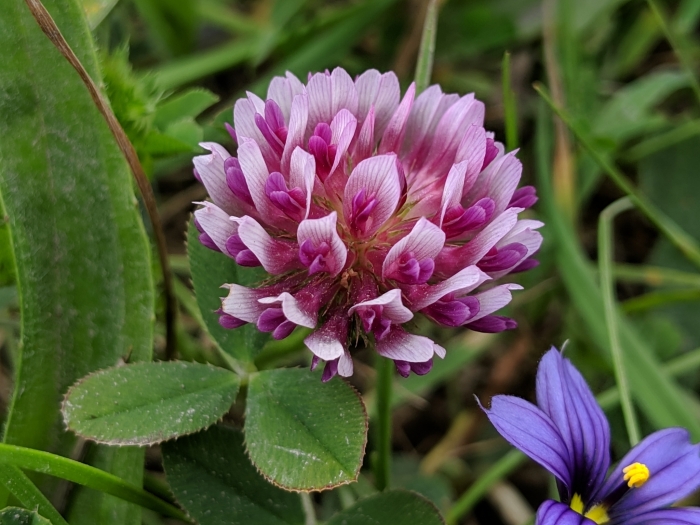Cow’s Clover
(Trifolium wormskioldii)
Cow’s Clover (Trifolium wormskioldii)
/
/

Ken-ichi Ueda
CC BY 4.0
Image By:
Ken-ichi Ueda
Recorded By:
Copyright:
CC BY 4.0
Copyright Notice:
Photo by: Ken-ichi Ueda | License Type: CC BY 4.0 | License URL: http://creativecommons.org/licenses/by/4.0/ | Rights Holder: Ken-ichi Ueda | Publisher: iNaturalist | Date Created: 2019-05-06T14:32:58-07:00 |


















































Estimated Native Range
Summary
Trifolium wormskioldii, commonly known as Cow’s Clover, is a perennial herb that is native to a variety of habitats including coastal prairies, moist meadows, and the edges of freshwater marshes in western North America, from Alaska to California, and eastward to Wyoming and New Mexico. It can be annual or perennial depending on environmental conditions, and sometimes takes a mat-like form with decumbent or upright stems. Typically, it reaches a height of 4 to 12 inches (10 to 30 centimeters). The rounded inflorescences are 2 to 3 centimeters wide, with sepals that are bristle-tipped. The corollas are pinkish-purple or magenta with white tips, blooming in late spring to early summer. The flowers are moderately showy and attract pollinators such as bees.
Cow’s Clover is valued for its nitrogen-fixing ability, which enriches the soil, making it a beneficial component in meadow or prairie restorations and in ecological gardening. It is also used as forage for livestock and wildlife. This species is adaptable to various soil types, though it prefers moist, well-drained soils. It tolerates a range of light conditions from full sun to partial shade. While generally easy to maintain, it can be susceptible to rust and mildew in humid conditions.CC BY-SA 4.0
Cow’s Clover is valued for its nitrogen-fixing ability, which enriches the soil, making it a beneficial component in meadow or prairie restorations and in ecological gardening. It is also used as forage for livestock and wildlife. This species is adaptable to various soil types, though it prefers moist, well-drained soils. It tolerates a range of light conditions from full sun to partial shade. While generally easy to maintain, it can be susceptible to rust and mildew in humid conditions.CC BY-SA 4.0
Plant Description
- Plant Type: Herb
- Height: 0.1-0.3 feet
- Width: 1-2 feet
- Growth Rate: Moderate
- Flower Color: Purple
- Flowering Season: Spring
- Leaf Retention: Evergreen
Growth Requirements
- Sun: Full Sun
- Water: Medium, High
- Drainage: Fast
Common Uses
Bee Garden, Bird Garden, Butterfly Garden, Low Maintenance, Showy Flowers, Street Planting
Natural Habitat
Coastal prairies, moist meadows, and freshwater marsh edges
Other Names
Common Names: Cow Clover, Springbank Clover, Sand Clover, Seaside Clover, Coast Clover, Sierra Clover, Wormskjold’s Clover, Saltmarsh Clover, Trèfle De Wormskjöld
Scientific Names: , Trifolium wormskioldii, Trifolium spinulosum, Trifolium calocephalum,
GBIF Accepted Name: Trifolium wormskioldii Lehm.